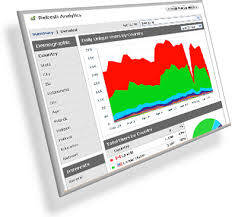If the Middle Market were a country, its GDP would rank it as the fourth largest economy in the world.
That kind of financial clout should capture the attention of numerous midsized software vendors. But here are additional strong stats for those who need more convincing:
National Center for the Middle Market ***
Initial research conducted by the National Center for the Middle Market has shown that the U.S. middle market is made up of almost 200,000 companies with annual revenues between $10 million and $1 billion, as of October 2011.
Employment growth for mid-market firms over the past 12 months was 3.2 percent, which added an estimated 750,000 jobs to U.S. payrolls so far in 2014. If mid-market companies deliver on projected job growth of 3.3 percent, the sector will create 59 percent of all new jobs in 2014.
Deloitte
Collectively mid-market generates approximately US$10 trillion of the US$30 trillion of annual gross receipts in the United States… and employ 43 million people…
Economist Intelligence Unit
In Japan, for example, the middle market accounts for a small proportion of Japan’s total enterprises – 2.1 percent – but employs more than a quarter of total employment and generates about one-third of total revenues. Yet, like its counterpart in other countries, it receives comparatively little attention – arguably far less than it deserves given the middle market employs a quarter of the workforce, earns around a third of gross revenues and has demonstrated remarkable resilience amid the difficult economic conditions of recent years.
Gartner predicts SMB IT spending this year will reach $901 billion, up from $868 billion last year, with estimates that spending will cross the $1 trillion mark by 2015.
The Mid-Market Opportunity for Midsized Software Vendors Mid-market companies need software solutions that are sophisticated but not costly – and easy to implement and maintain. These companies need vendors who truly understand and support their business objectives for technology, and who provide right-fit solutions. Midsized companies embrace technologies as competitive differentiators and as a strategic means to sustain and grow their businesses. Midsized organizations need the right technology solutions to help them innovate their business offerings and to evolve with market changes to meet the needs of their customers. And that’s where midsized software vendors come in. Companies in the mid-market are interested in all categories of software solutions, from operational excellence to improving customer relationships. So there is limitless opportunity for any kind of midsized software vendor – if they make the decision to purposefully target midmarket customers. A 2014 Deloitte survey focused on how midsized companies utilize technology both for infrastructure needs and for competitive fuel. The results resoundingly demonstrate that there is a tremendous opportunity for midsized B2B software vendors to provide solutions to their fellow mid-market organizations:
Technology is becoming a strategic imperative. The survey findings confirm that mid-market companies’ view of technology is increasingly enthusiastic. Forty-one percent of respondents say their leadership views technology as a “critical differentiator and key to growth,” while another 38% view it as “a strategic investment.” Fewer organizations now view technology as simply “necessary.” As a result, more companies are using technology as a means to increase the top and bottom lines and to meet the needs of both the workforce and the customer. Meanwhile, more than half the respondents report plans for increased spending on technology.
Many companies are embracing change and expressing a healthy appetite for innovation. Thirty-six percent of respondents are dedicating at least half of their IT budgets to implementation of new technology versus maintenance of existing systems.
Technology may become a great equalizer for mid-market companies. Cloud-based solutions, data analytics and business intelligence solutions continue to provide “large corporation solutions” to mid-market enterprises in terms of the operational capabilities, overall productivity and competitive insights.
Two Kinds of Mismatched Vendors All too often, midsized B2B software vendors think that the best markets are in the large enterprise. These vendors are lured by big money and big deals – without considering the real costs of what it takes to thrive in those markets – as a smaller vendor. Many midsized vendors do not survive forays into the turf of larger software vendors. The high-end enterprise is a very tough place for smaller software vendors. The field of potential customers is very limited, so competition is fierce. Larger software vendors already have established extensive relationships with these enterprises. Sales cycles are longer, which introduces more chances for failure to close deals – and for the squandering of finite resources for the midsized vendor. Even when a smaller vendor wins an initial deal with a large enterprise company, it is usually displaced by a larger vendor very quickly. With much deeper pockets, the larger vendor can easily offer steep discounts and free benefits. Conversely, when large enterprise software vendors target the mid-market, these high end vendors rarely go very deep into the overall mid-market segment (and seldom into “small business” territory). For the most part, large enterprise software vendors still don’t really know how to support mid-market business needs or provide the right-fit solutions. Even though they claim otherwise, many large software vendors miss the mark simply because they do superficial work related to understanding mid-market organizations. In reality, larger software vendors tend to treat the mid-market as one market, failing to see how different the many tiers of the mid-market are. Know Your Customers, Find Success A 2013 Forrester survey of executive level buyers revealed troublesome insight: the sales teams contacting these buyers usually had very poor understanding of the needs and problems of the buyer or even the buyer’s role in the organization. Making things worse, sales teams met with these buyers with very little knowledge not only of the buyer’s specific business but the buyer’s general industry. Sales teams are meeting with important buyers without intelligent answers to customer questions, or even appropriate case studies to show product relevance to the buyer organization problems and needs. From my experience, this is especially true of sales teams for software vendors. Many midsized software vendors are missing a huge opportunity to purposefully target midsized and smaller companies for their products and sales efforts. These vendors can find success by understanding how their products relate to mid-market customer needs, especially for specific solution scenarios. Success also comes to vendors that know how to properly serve midsized companies during the entire customer lifecycle. Too often software solutions are designed and developed with limited customer and target industry knowledge. The decision for midsized software vendors to sell to mid-market companies should be a no-brainer. Midsized vendors are part of the mid-market – they can draw on their own buyer experiences for the software they purchase for their companies. There is also a healthy parity in relationships with fellow mid-market companies – a parity that is rarely exploited well by midsized vendors. Vendors as partners with their customers achieve success by helping their midmarket customers attain their business objectives. But midsized vendors can only do this if they understand how mid-market organizations buy and use software solutions. Finding the Right Markets – Providing the Right Solutions It’s critical for midsized software vendors to fully understand the right markets for their solutions. But midsized software vendors often don’t have the experienced resources needed to develop competitive and success-building strategies for product direction, customer targeting and robust go-to-market approaches. Midsized vendors greatly benefit from a consultant who stands outside the company and thoroughly assesses the current vendor state, and then explores potential new directions that help the vendor stand out from the herd. The right independent consultant has the savvy and expertise to help midsized software vendors better identify and serve a strong target market and distinct market segments, as well as provide rich and authentic customer experiences. The consultant looks for innovative business models, new or underserved markets, and competitive changes to how the vendor does business to find a better road to growth, improved revenue and longevity. Unfortunately midsized vendors many times turn to the large analyst firms for advice. Just as large enterprise software vendors are ill prepared to serve mid-market companies, most analyst firms don’t understand selling software either as a midsized or smaller vendor, or targeting midsized or smaller companies as customers for software







